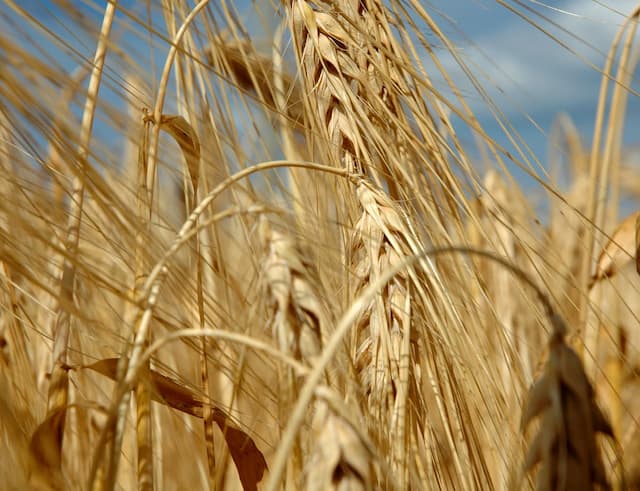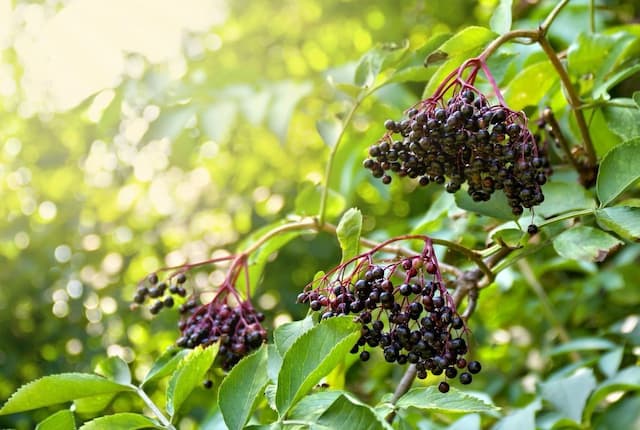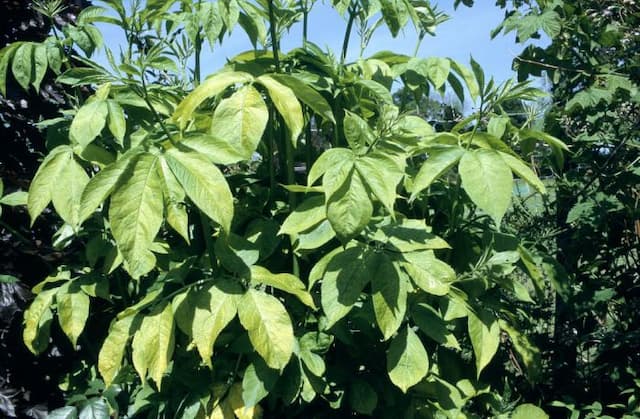Viburnum plicatum f. tomentosum 'Nanum Semperflorens'

ABOUT
The plant with the common name Japanese Snowball is recognised for its distinctive appearance, characterized primarily by its layered, horizontally spreading branches which give it a tiered look. The leaves of this plant are ovate with a slightly wrinkled texture, boasting a deep green color that can be accompanied sometimes by a reddish edge when they are young. As the seasons shift to fall, the foliage transforms to splendid shades of red and burgundy, providing a picturesque autumn display. The most striking feature of the Japanese Snowball is its flowers, which bloom profusely in the spring. These flowers are showy and rounded, resembling fluffy snowballs, hence the common name. They start off as greenish or creamy white buds and then open into clusters of pure white, creating a contrast with the green foliage beneath. Although individual flowers are small and somewhat inconspicuous, when bunched together in spherical clusters, they make an impressive display. Following the flowers, the plant produces fruit that is initially red and turns to a blackish hue upon maturity. These fruit clusters can add interest to the plant even after the flowers have faded. The overall impression of the Japanese Snowball is of a graceful, eye-catching shrub that provides multi-seasonal interest with its changing leaf colors, abundant flowering, and fruiting habit. This makes it a beloved choice for ornamental plantings in gardens where it can serve as a focal point or part of a hedgerow or border.
About this plant
 Names
NamesSynonyms
Doublefile Viburnum, Japanese Snowball, Compact Double-Flowered Japanese Snowball, Compact Japanese Snowball Bush.
Common names
Viburnum plicatum var. plicatum f. tomentosum, Viburnum plicatum var. tomentosum.
 Toxicity
ToxicityTo humans
Doublefile Viburnum is generally considered to have a low level of toxicity to humans. While they are not typically consumed and thus not commonly associated with poisoning, ingesting parts of this plant in large quantities could potentially cause mild stomach upset. The symptoms would likely be limited to gastrointestinal discomfort such as nausea, vomiting, or diarrhea. It is always advisable to avoid ingesting parts of ornamental plants due to potential unknown toxins.
To pets
Doublefile Viburnum is also considered to have low toxicity to pets. It is not known to be a common cause of poisoning in animals, and pets typically do not choose to eat large amounts of this plant material. However, if a pet were to ingest significant quantities, they might experience mild gastrointestinal upset, with possible symptoms including vomiting or diarrhea. As a precaution, it is wise to keep an eye on pets around ornamental plants and discourage them from any ingestion.
 Characteristics
CharacteristicsLife cycle
Perennials
Foliage type
Deciduous
Color of leaves
Green
Flower color
White
Height
3-4 feet (0.9-1.2 meters)
Spread
3-4 feet (0.9-1.2 meters)
Plant type
Shrub
Hardiness zones
5
Native area
Asia
Benefits
 General Benefits
General Benefits- Compact Growth - Fits well in small gardens or spaces and can be used for bordering.
- Ornamental Flowers - Produces beautiful, white, lace-cap flowers that enhance the visual appeal of landscapes.
- Four-Season Interest - Offers year-round interest through flowers in spring, lush foliage in summer, berry-like fruits in autumn, and textured bark in winter.
- Easy to Grow - Adapts to various soil types and conditions, making it a low-maintenance choice for novice gardeners.
- Wildlife Attraction - Attracts birds and butterflies, supporting local biodiversity.
 Medical Properties
Medical PropertiesThis plant is not used for medical purposes.
 Air-purifying Qualities
Air-purifying QualitiesThis plant is not specifically known for air purifying qualities.
 Other Uses
Other Uses- Edible Landscaping: Doublefile viburnum's fruit is not widely known for eating, but in a survival situation, the berries could be consumed.
- Photography Backdrop: The shrub’s dense foliage and seasonal changes provide a beautiful backdrop for outdoor photography.
- Insectary Plant: Supports beneficial insects by providing habitat and food resources, encouraging natural pest control in gardens.
- Privacy Screen: With its dense growing habit, doublefile viburnum can be used to create a living privacy screen in gardens or along property lines.
- Noise Reduction: Planted in groups, it can help to dampen noise from roads or neighbors.
- Windbreak: The shrubs can be planted in a row to serve as a windbreak to protect other plants or outdoor living spaces.
- Erosion Control: The fibrous root system of doublefile viburnum can help to stabilize soil on slopes and prevent erosion.
- Crafting: Dried branches can be used in floral arrangements, wreaths, or other decorative crafts.
- Learning Aid: Educators may use the plant to teach students about botanical concepts like opposite branching and flower structure.
- Seasonal Celebrations: The flowering period in the spring can coincide with various festivals and could be used as part of seasonal decorations or celebrations within communities.
Interesting Facts
 Feng Shui
Feng ShuiThe Doublefile Viburnum is not used in Feng Shui practice.
 Zodiac Sign Compitability
Zodiac Sign CompitabilityThe Doublefile Viburnum is not used in astrology practice.
 Plant Symbolism
Plant Symbolism- Renewal: The recurring blossoms of 'Nanum Semperflorens,' also known as Doublefile Viburnum, signify the concept of renewal. Just as the plant regularly blooms, it represents the idea of starting afresh or experiencing rebirth.
- Perseverance: Given its 'Semperflorens' designation, which means 'always flowering', this viburnum suggests perseverance, symbolizing the capacity to endure and thrive throughout various conditions.
- Abundance: The lush, full blossoms of Doublefile Viburnum are often associated with abundance and prosperity, evoking a sense of plentifulness and richness.
- Protection: The Doublefile Viburnum has a dense, layered structure, which can symbolize shelter and protection, akin to the way the shrub's thick foliage might shelter birds and wildlife.
- Beauty and Elegance: With its striking flowers and elegant form, the Doublefile Viburnum is often associated with beauty, grace, and sophistication.
 Water
WaterThe Japanese Snowball, which is the common name of Viburnum plicatum f. tomentosum 'Nanum Semperflorens', prefers evenly moist soil, so it's important to provide it with consistent watering. Initially after planting, water the shrub deeply 2-3 times per week to help establish roots. Once established, reduce watering to about an inch of water per week. During the growing season, particularly in dry spells, increase to 2 inches per week. Use a soaker hose or drip irrigation to provide a deep watering that reaches the root zone, rather than shallow sprinkles that don't penetrate the soil effectively. Avoid over-watering, which can lead to root rot.
 Light
LightThe Japanese Snowball thrives in full sun to partial shade. It's best situated in a spot that receives at least 4 to 6 hours of direct sunlight per day, while providing some protection from intense afternoon sun. Partially shaded areas where the plant can get dappled sunlight are ideal, especially in regions with very hot summers.
 Temperature
TemperatureJapanese Snowballs are hardy and can tolerate a wide range of temperatures, thriving best between 60°F and 75°F. They can withstand minimum winter temperatures down to -10°F. Ensure they are planted in an area with adequate winter protection and avoid exposure to extreme temperature fluctuations to maintain their health.
 Pruning
PruningPruning the Japanese Snowball should be done after its spring flowering to maintain its shape and encourage new growth. Remove any dead or damaged branches as well as older stems to rejuvenate the plant and stimulate blooming. Annual pruning is generally enough for this shrub, but it can tolerate more frequent trimming if needed to control size.
 Cleaning
CleaningAs needed
 Soil
SoilThe Japanese Snowball, ideal soil mix is well-draining, rich in organic matter with a slightly acidic to neutral pH of 5.5 to 7.0. A blend of garden soil, peat moss, and perlite can create a supportive environment.
 Repotting
RepottingJapanese Snowballs should be repotted every 3-5 years, preferably in the spring before new growth begins to ensure they have room to grow and healthy soil.
 Humidity & Misting
Humidity & MistingJapanese Snowballs thrive in moderate humidity levels, generally around 40-60%, which is typical for many outdoor environments.
 Suitable locations
Suitable locationsIndoor
Place in bright, indirect light and ensure good airflow.
Outdoor
Plant in partial shade with moist, well-draining soil.
Hardiness zone
5-8 USDA
 Life cycle
Life cycleThe common name of Viburnum plicatum f. tomentosum 'Nanum Semperflorens' is Dwarf Doublefile Viburnum. The plant begins its life cycle as a seed, which, under suitable conditions of warmth and moisture, germinates and develops into a seedling. As the seedling grows, it establishes a root system and produces shoots, maturing into a young plant with characteristic deeply veined, dark green leaves. The Dwarf Doublefile Viburnum enters a period of vegetative growth, during which it increases in size and may be pruned to maintain a compact form. Following this, it reaches reproductive maturity and produces abundant white, lacecap-style flowers in the spring, attracting various pollinators. After pollination, the flowers give way to small red berries that mature to black, and the plant eventually enters a period of dormancy in winter, particularly in colder climates, completing the annual cycle.
 Propogation
PropogationPropogation time
Spring-Early Summer
Propogation: The most popular method of propagation for the Doublefile Viburnum, known scientifically as Viburnum plicatum f. tomentosum 'Nanum Semperflorens', is through softwood cuttings. This is typically done in late spring or early summer when new growth is still tender and green. To propagate, a 4 to 6 inch (approximately 10 to 15 centimeters) cutting is taken just below a node, and the lower leaves are removed. The base of the cutting should be dipped in rooting hormone to encourage root development, and then the cutting is placed in a well-draining soil mixture. It is important to keep the soil moist and the environment humid, which can be achieved by covering the cutting with a plastic bag or placing it in a propagator. In a matter of weeks, the cutting should begin to root, and it can then be transplanted to a more permanent location.



![Elder [Black Tower]](/_next/image?url=https%3A%2F%2Fplants-admin.emdemapps.com%2Fimages%2Fplants%2F%2Fimages%2F604b5cad99578.png&w=640&q=75)





